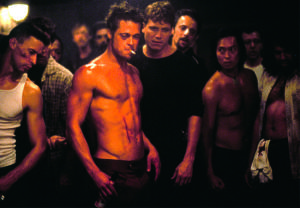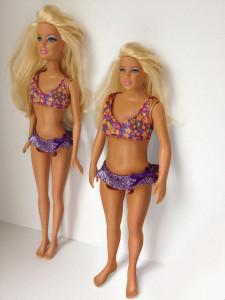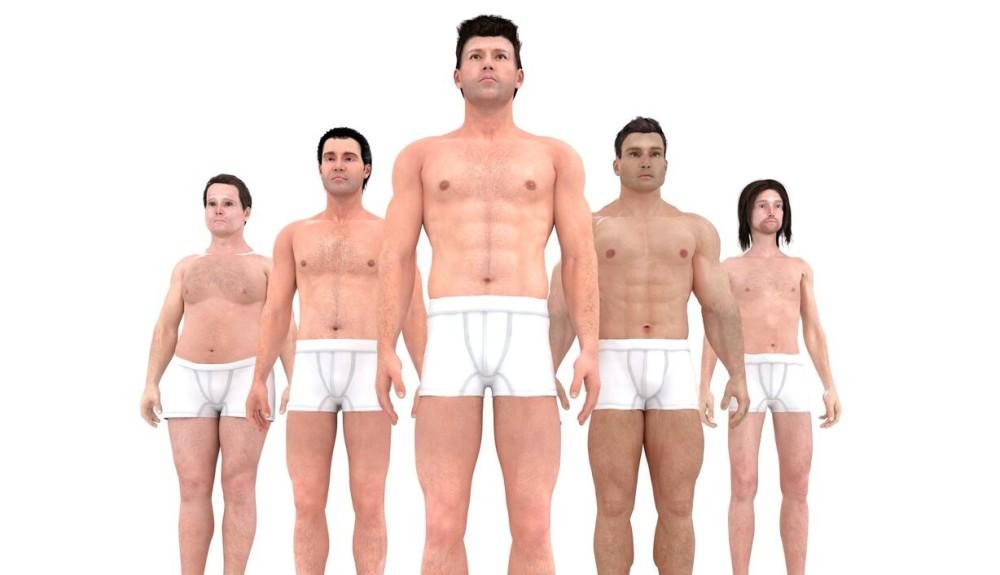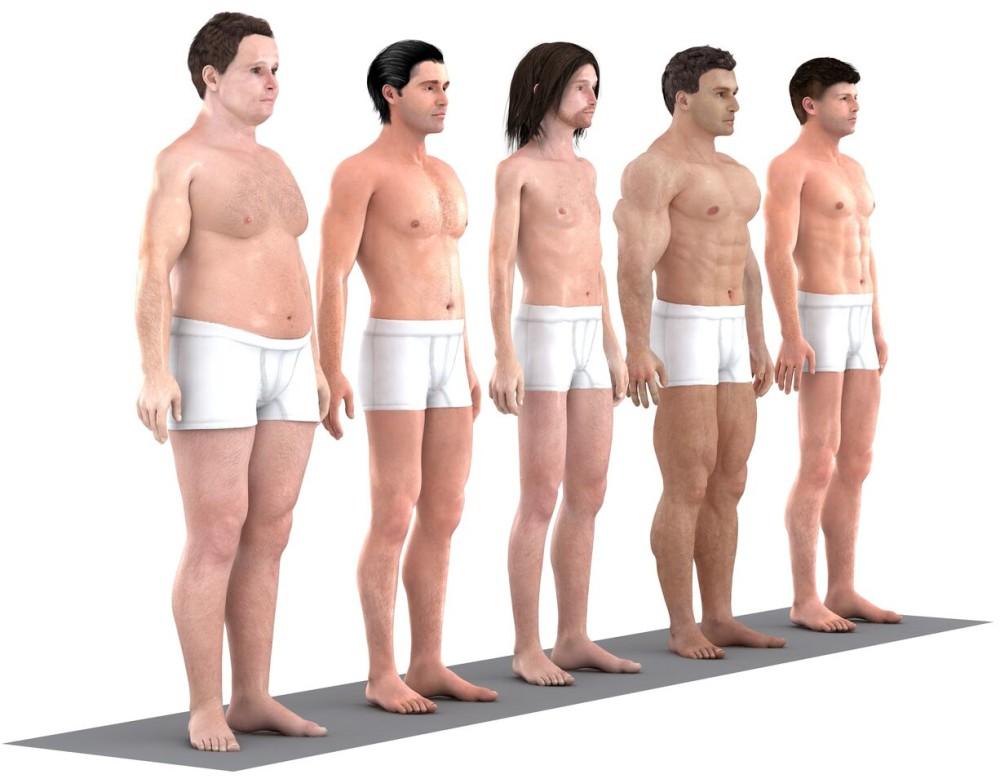When the subject of body image is brought up it is typically framed as a woman’s issue, and that doesn’t really shock me either. It seems as if the media is programmed to make women feel as terrible about their bodies as humanly possible, so it makes sense that they would bring it up a lot. And the media is certainly more forgiving of men who do not have perfectly sculpted bodies, I mean you rarely see men on the cover of tabloids being called out for a bit of flab or a spot of cellulite. And let’s not forget “dad bod,” which was a legitimate trend there for a while. Meanwhile, it’s almost impossible to imagine the media ever framing the phrase “mom bod” in any way other than as a pejorative.
That being said, there is still a lot of pressure placed on men to conform to a rigid set of beauty standards (handsome standards?) that are often completely and impossibly unattainable. Even the forgiving dad bod was popularized by an actor between movies who had gained ten to fifteen pounds. Men’s health and fitness magazines often show off what they sell as the perfect male body… too bad that in order to get the right pictures of that body the models often need to dehydrate themselves. Male movie stars regularly go on crash diets and use dangerous performance enhancing drugs to achieve bodies of super heroic proportions. In reality, there has always been pressure for men to attain the ideal male physique, it is simply presenting itself in a new way.
As the creator of the realistically proportioned fashion dolls that made headlines back in 2014, and likely inspired the new line of Barbie body types, artist Nickolay Lamm knows a thing or two about impossible-to-achieve body ideals. Lammily was created using the body measurements of an average nineteen-year-old woman. The measurements were used to create a realistically proportioned doll body, turned into a 3D model, 3D printed and then digitally altered to look like a fashion doll. The point was to say that normal bodies were beautiful, and the uplifting message quickly went viral. It became a widely shared story for a lot of reasons, but one of the most compelling was because it showed exactly how skewed the body images championed by dolls like Barbie really were.
To point out the ever changing, and always demanding, male handsome standards, Lamm teamed up with digital artist Marco Romero to create a series of 3D images that detailed the ideal male physique through the ages.
“The process of character development is primarily focused on three softwares: Autodesk 3Ds Max, Smith Micro Poser Pro and Adobe Photoshop,” Romero explained of the technology behind his modeling. “It is important to clarify that I don’t work with ‘stock characters’ because in my experience are often unsuitable for such extreme deformations that need to be developed; this is why my 3D base models has the design and amount of polygons that allow me to make a great job; so I found this way of optimizing to making my own characters for Poser Pro.”
Male Body Ideals Through Time is a study of the male form and how economic, cultural, media and musical pressures changed it throughout the last century. The first 3D body was the ideal physique of a man in the 1870s, and it is surprisingly plump. Heavier bodies were considered attractive in the late 19th century (and earlier) because it suggested that the man was wealthy and could afford rich and fatty foods. There was even an exclusive group called the Fat Man’s Club where the only condition of membership was a weight of two hundred pounds or more.
The more plump male figure started to go out of fashion as we moved into the 20th century and fattier foods became easier to come by. Plump bellies were no longer a sign of wealth, but were replaced with the trim and slightly muscled body of the popular movie stars of the era like John Wayne, Clark Gable and Gregory Peck. And of course, there was no way to comfortably remain the ideal man for long, as history would continue to change it up on men regularly. From the ’60s when skinny and slim was in, to the ’80s when bulging muscles dominated and into modern times where men’s body ideals have settled somewhere in the middle like Brad Pitt’s body from Fight Club. But no matter the era, those body ideals are still somehow impossibly hard to achieve and maintain.
I don’t think anyone could, with a straight face, suggest that the pressures placed on men to maintain the ideal body are remotely comparable to those placed on women. But one problem doesn’t have to be larger than another to remain a problem worth addressing. The growing expectation placed on men to conform to body types that they may not naturally be capable of achieving is a destructive force that chips away a man’s self-esteem and self-worth. Projects like Lamm’s Male Body Ideals Through Time are important because they not only help men identify any feelings of inadequacy that they may have, but also help them give voice to those feelings. It also, hopefully, reveals to men of all body types the fickle nature of body ideals and maybe helps them understand that they don’t need to feel bad about things that are beyond their control.
If you collect dolls, or just want to make sure that the male form is represented realistically, make sure that you help Lamm bring his Realistic Male Fashion Doll to life. Just like with his female fashion dolls, the male version isn’t overly muscular or unrealistically proportioned. And make sure you read Lamm’s entire on male body ideals over on his website. Discuss in the 3D Printed Male Physique forum over at 3DPB.com.
Subscribe to Our Email Newsletter
Stay up-to-date on all the latest news from the 3D printing industry and receive information and offers from third party vendors.
You May Also Like
Gorilla Sports GE’s First 3D Printed Titanium Cast
How do you help a gorilla with a broken arm? Sounds like the start of a bad joke a zookeeper might tell, but it’s an actual dilemma recently faced by...
Nylon 3D Printed Parts Made More Functional with Coatings & Colors
Parts 3D printed from polyamide (PA, Nylon) 12 using powder bed fusion (PBF) are a mainstay in the additive manufacturing (AM) industry. While post-finishing processes have improved the porosity of...
$25M to Back Sintavia’s Largest Expansion of Metal 3D Printing Capacity Since 2019
Sintavia, the digital manufacturing company specializing in mission-critical parts for strategic sectors, announced a $25 million investment to increase its production capacity, the largest expansion to its operations since 2019....
Velo3D Initiates Public Offering in a Bid to Strengthen Financial Foundations and Drive Future Growth
Velo3D (NYSE: VLD) has been among a number of publicly traded 3D printing firms that have attempted to weather the current macroeconomic climate. After posting a challenging financial report for 2023,...




































